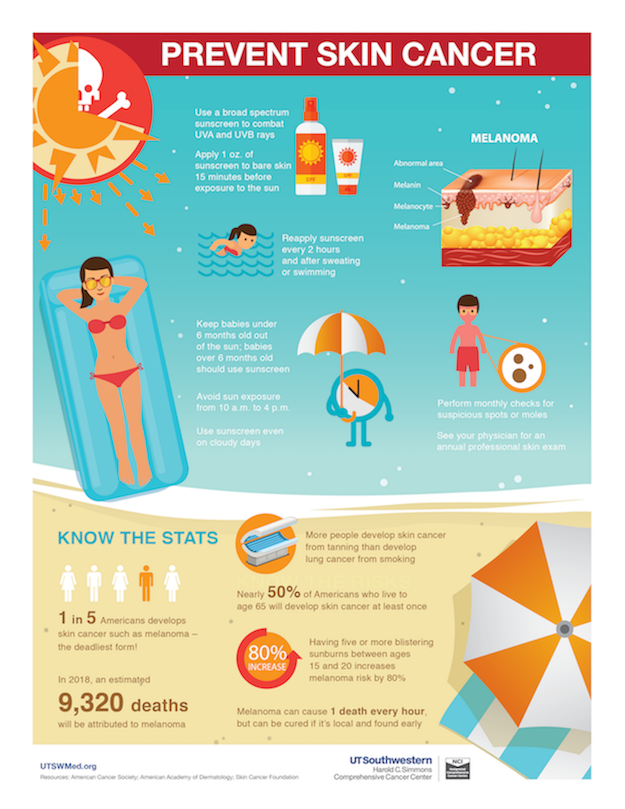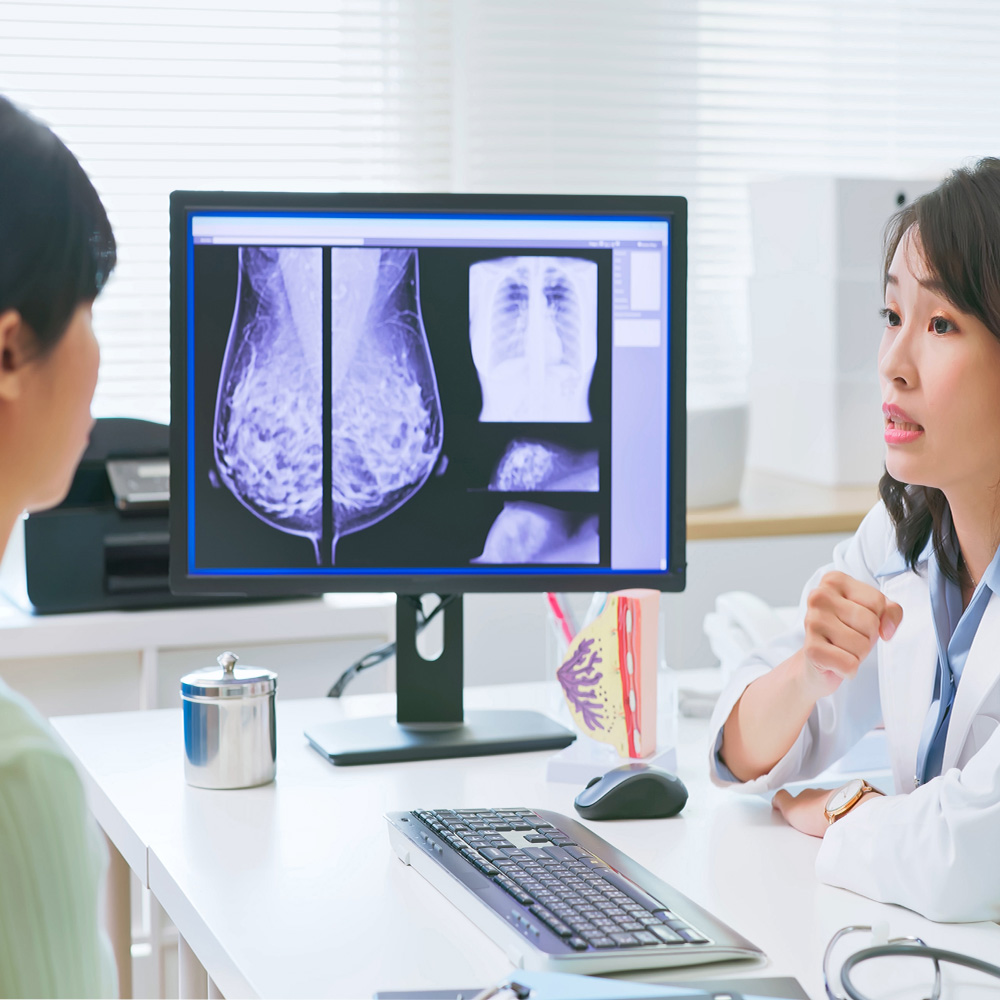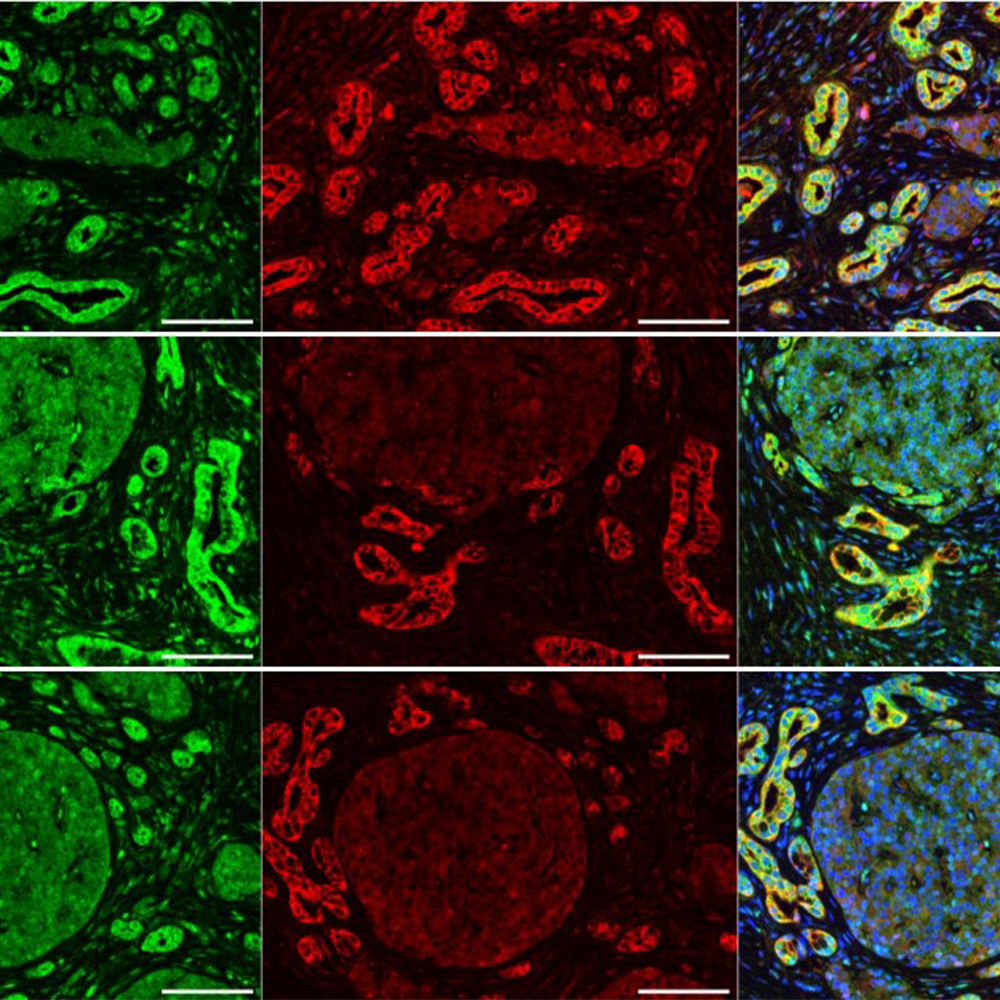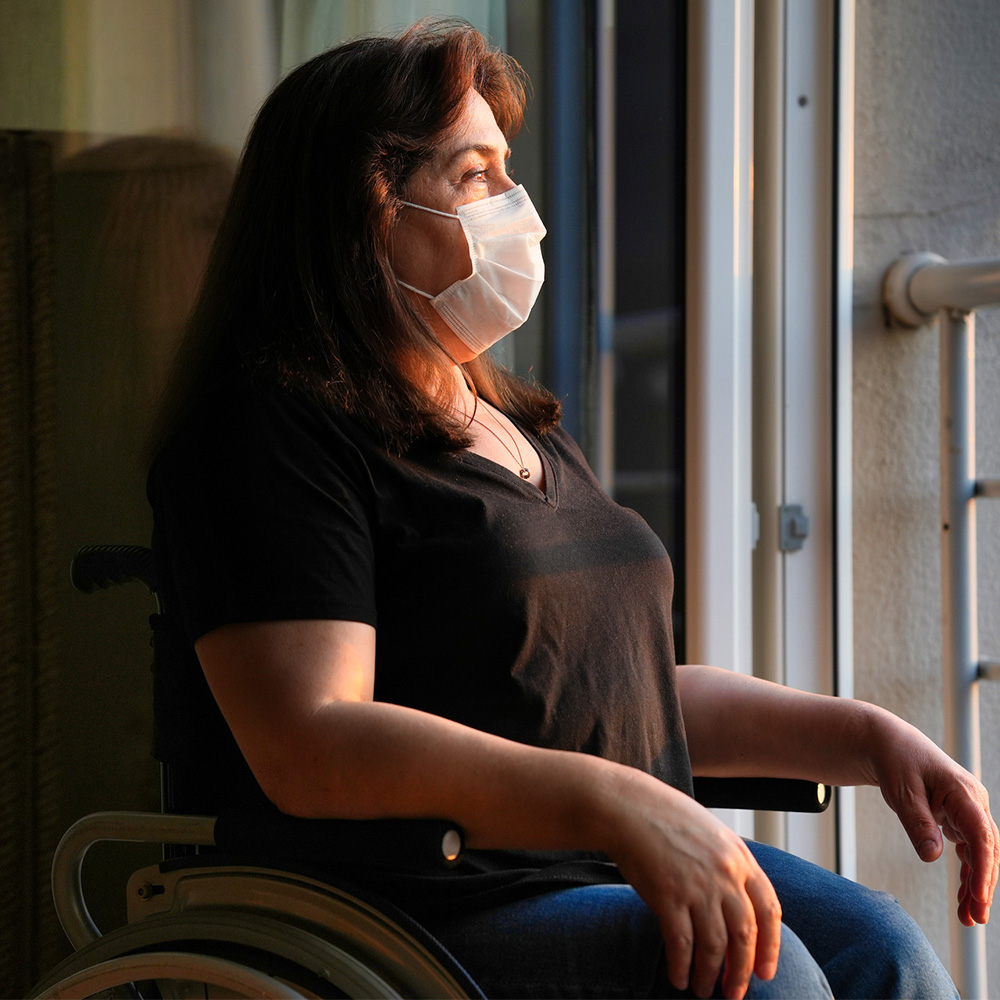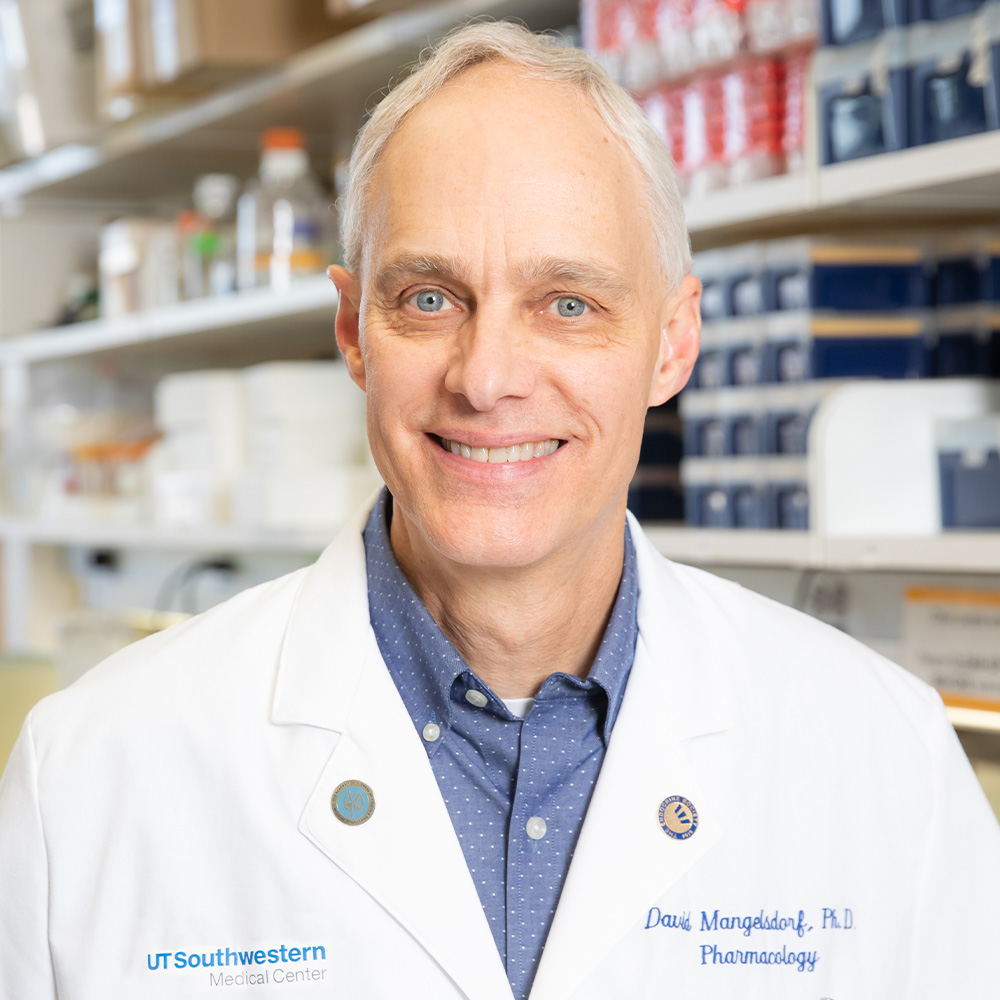Add checking your skin to summer plans

DALLAS – June 19, 2018 – Summer time means shorts, tank tops, bathing suits – in other words, lots of exposure to the damaging UV rays of the sun. With more skin exposed, now is an especially good time to check for signs of skin cancer.
“We recommend that everyone get in the habit of checking for signs of skin cancer at regular intervals year-round, though understandably people are more likely to be thinking about skin cancer in the hot summer months. You’ll want to check your skin from head to toe, including areas like the scalp and between your toes, so it’s helpful to have a partner to help you,” says Dr. Katherine Gordon, Assistant Professor of Dermatology at UT Southwestern Medical Center.
Here’s what Dr. Gordon says to look for:
- Moles that are changing, are asymmetrical, or have uneven edges,
- Moles that are multi-colored (brown, tan, and black),
- Moles that are raised or have a diameter larger than the size of a pencil eraser,
- Scaliness, itchiness, tenderness, or pain around a mole,
- A sore that does not heal or that heals and then returns,
- Brown or black streaks under a nail.
Though individuals who are older or fair-skinned are most likely to develop skin cancer, people of any age and any skin tone can develop skin cancer. Men are more likely to develop melanoma, by far the most serious type of skin cancer, than women. Individuals of color are prone to skin cancer in areas that aren’t commonly exposed to the sun, such as the palms of the hands, the soles of the feet, the inside of the mouth, and under the nails.
“While the 5-year survival rate for skin cancer that has metastasized is low, if melanoma is caught before it has spread to the lymph nodes, the survival rate is 99 percent, so I urge everyone to inspect their skin thoroughly this summer,” Dr. Gordon says.
The Harold C. Simmons Comprehensive Cancer Center at UT Southwestern Medical Center is one of 49 NCI-designated Comprehensive Cancer Centers in the U.S.
About UT Southwestern Medical Center
UT Southwestern, one of the premier academic medical centers in the nation, integrates pioneering biomedical research with exceptional clinical care and education. The institution’s faculty has received six Nobel Prizes, and includes 22 members of the National Academy of Sciences, 16 members of the National Academy of Medicine, and 15 Howard Hughes Medical Institute Investigators. The faculty of more than 2,700 is responsible for groundbreaking medical advances and is committed to translating science-driven research quickly to new clinical treatments. UT Southwestern physicians provide care in about 80 specialties to more than 100,000 hospitalized patients, 600,000 emergency room cases, and oversee approximately 2.2 million outpatient visits a year.
###

